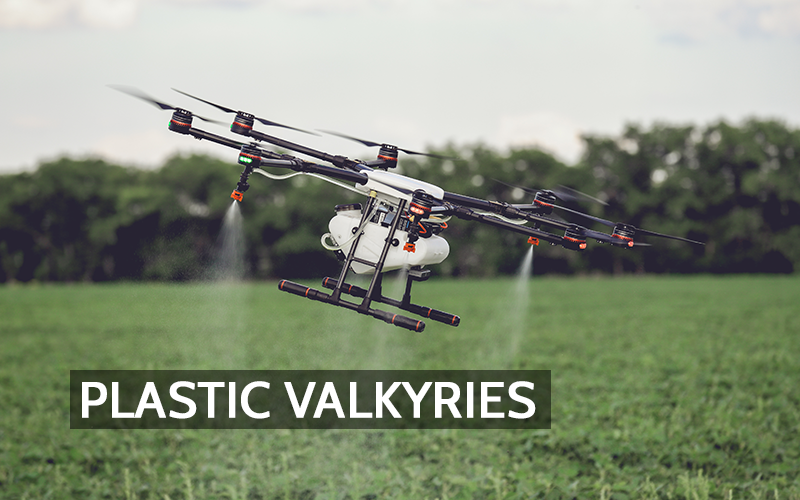As the world grapples with the pressing need to address climate change and pollution, drone technology has emerged as a game-changer in air quality monitoring. These agile, unmanned aerial vehicles (UAVs) offer unprecedented access to remote, hazardous, and otherwise difficult-to-reach areas, providing critical data that shapes environmental policies and practices. From urban centers to agricultural fields, the applications of drones in air quality monitoring span diverse sectors, promising a more comprehensive understanding of pollution dynamics and mitigation strategies. However, while the potential is immense, the journey to widespread adoption is not without its challenges.
Revolutionizing Air Quality Monitoring Across Sectors
- Urban Planning and Public Health Cities are at the forefront of air pollution, with vehicles, industries, and construction activities contributing significantly to deteriorating air quality. Drones equipped with advanced sensors can fly through urban areas to detect harmful pollutants such as nitrogen dioxide (NO2), particulate matter (PM2.5 and PM10), and volatile organic compounds (VOCs). Urban planners and policymakers use this data to identify pollution hotspots, optimize traffic flows, and enforce emission regulations. Public health researchers also rely on drones to assess the impact of air pollution on human health.
- Agriculture and Forestry In agricultural regions, drones play a pivotal role in monitoring air quality to mitigate the effects of pesticide drift and assess emissions from livestock operations. These UAVs can traverse large swathes of farmland, capturing data that informs sustainable farming practices and compliance with environmental regulations. Forested areas also benefit from drone technology. During wildfires, drones monitor smoke plumes and provide real-time updates on air quality, helping emergency responders prioritize evacuation and firefighting efforts. Beyond firefighting, drones contribute to long-term studies of how deforestation and land use changes impact air quality and carbon emissions.
- Industrial and Oil & Gas Sectors Industrial facilities and oil refineries often release pollutants into the atmosphere, posing significant risks to surrounding communities and ecosystems. Drones equipped with gas analyzers and thermal cameras detect leaks and measure emissions of greenhouse gases such as methane (CH4) and carbon dioxide (CO2). These insights help companies identify areas for improvement and adhere to stricter environmental standards. In the oil and gas sector, drones are revolutionizing leak detection and repair programs. Traditional methods involve manual inspections, which can be time-consuming and dangerous. Drones offer a safer, faster, and more accurate alternative, reducing both operational costs and environmental impact.
- Academic and Environmental Research Academic institutions and environmental organizations leverage drones for research purposes, gathering data on atmospheric composition, pollution sources, and climate change effects. These studies often focus on regions that are difficult or impossible to access by land, such as polar ice caps, mountains, and open oceans. Drones equipped with air-sampling devices and spectrometers enable groundbreaking research into global air quality trends and their implications for ecosystems and human populations.
Future Initiatives in Drone Technology for Air Quality Monitoring
The future of drone technology in air quality monitoring looks promising, with ongoing advancements aiming to enhance their capabilities and applications. One such initiative involves the integration of artificial intelligence (AI) and machine learning algorithms. These tools enable drones to process data in real-time, identify pollution patterns, and predict future trends with greater accuracy.
Another exciting development is the miniaturization of sensors. As sensors become smaller and more efficient, drones will be able to carry multiple instruments without compromising flight performance. This improvement will allow for more comprehensive data collection during a single mission, reducing costs and increasing efficiency.
Collaborative networks of drones, often referred to as “drone swarms,” are also gaining traction. These swarms work together to cover larger areas and provide synchronized, high-resolution data. Such innovations are particularly valuable for monitoring air quality in sprawling urban areas or across international borders.
Challenges in Implementing Drone Technology
Despite their potential, drones face several obstacles in becoming a mainstream tool for air quality monitoring.
- Regulatory Hurdles One of the most significant barriers to widespread drone use is the regulatory landscape. Many countries impose strict rules on drone operations, including flight restrictions in certain areas, licensing requirements, and limitations on payloads. These regulations can complicate deployment and limit the scale of monitoring projects.
- Technical Limitations While drone technology has advanced rapidly, technical challenges remain. Limited battery life restricts flight duration, particularly when carrying heavy sensors. Additionally, adverse weather conditions, such as high winds and heavy rain, can compromise drone performance and data accuracy.
- Data Integration and Privacy Concerns Collecting vast amounts of air quality data is only half the battle; integrating this data into existing systems and making it actionable is a complex task. Moreover, drones flying over populated areas often raise privacy concerns, leading to resistance from local communities.
- Cost and Accessibility High upfront costs for drones and specialized sensors can deter smaller organizations and developing countries from adopting this technology. While operational costs are generally lower than traditional monitoring methods, initial investments remain a barrier.
Drone technology represents a transformative approach to air quality monitoring, with applications spanning urban planning, agriculture, industry, and environmental research. By providing real-time, high-resolution data, drones empower stakeholders to make informed decisions that improve public health and environmental sustainability. However, addressing regulatory, technical, and economic challenges will be crucial for unlocking their full potential.
As advancements in AI, sensor technology, and drone swarming continue, the future of air quality monitoring promises to be more dynamic and efficient. With the right policies and investments, drones could play a pivotal role in combating air pollution and protecting the planet for future generations.


